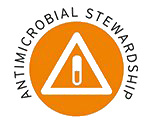Study also Reveals that Routine Use of Fluorescence Imaging Along with Clinical Assessment Resulted in Significant Reductions in Antibiotic Usage and Antimicrobial Dressing Costs
Toronto, Canada and London, UK – (November 25, 2020) MolecuLight Inc., the leader in point-of-care fluorescence imaging for real-time detection of wounds containing bacteria, announced the publication of results from a 2-year retrospective study of 229 foot ulcers in Diagnostics. Diabetic foot ulcers represent a large and ever-increasing financial burden on the National Health Service (NHS), costing up to £962 million annually1. Antimicrobials account for a highly variable portion of these costs, due in part to the clinical challenges associated with diagnosing bacterial burden and selecting appropriate treatment2. Improved methods of evaluating bacterial burden in wounds are needed to facilitate more judicious use of antimicrobials and reduce the associated economic burden. This clinician-directed study, “Routine Fluorescence Imaging to Detect Wound Bacteria Reduces Antibiotic Use and Antimicrobial Dressing Expenditure While Improving Healing Rates: Retrospective Analysis of 229 Foot Ulcers”, looked at wound-related outcomes and antimicrobial dressing costs that were quantified over 1-year before (2018/2019) and after (2019/2020) incorporating fluorescence imaging into routine practice at Gillian Hanson Diabetes Centre at Whipps Cross Hospital, London, UK.
During the period of fluorescence imaging using the MolecuLight i:X the number of wounds seen at the clinic increased by 27%, yet annual antimicrobial dressing expenditure decreased by 33%. Implementation of fluorescence imaging was associated with a 49% decrease in the prescription of antimicrobial dressings and a 33% decrease in antibiotic prescriptions. In addition, routine use of fluorescence imaging was associated with improved clinical outcomes, including a 23% increase in wound healing rates within 12-weeks (48% vs. 39%), likely due to earlier bacterial detection and improved wound hygiene.
“Diabetic foot ulcers (DFUs) and their bacterial burden produce a significant strain on the NHS (National Healthcare System) and I wanted to understand and quantify the effects of point-of-care fluorescence bacterial imaging on the costs and patient healing rates since the MolecuLight i:X was implemented at our clinic”, says Nadine Price, study author and podiatrist at the Whipps Cross Hospital. “Beyond the significant realised cost savings that the study uncovered, the fluorescence imaging procedure has had a noticeable impact on the quality of wound care provided to patients, without detriment to our clinical workflow. Having the ability to know at point-of-care whether a wound has significant levels of bacteria that may be indicative of infection enables us to offer the safest care for our patients and provides instant clinical feedback on treatment efficacy”, says Price.
The cost-savings revealed by the study showed that antimicrobial spending decreased by 47% from £22.68 per wound to £11.96 per wound. In addition, the 23% increase in wound healing that was observed with routine use of MolecuLight i:X is estimated to decrease total wound care costs by 10% or £762 per patient3, annually.
“To improve decision-making and care with DFU patients we must be able to measure what we manage. The MolecuLight i:X is a powerful tool for screening DFUs for infection as well as monitoring new or worsening bacterial burden over time”, says Dr. David Armstrong, Professor of Surgery, Director of the Southwestern Academic Limb Salvage Alliance (SALSA) at the Keck School of Medicine of the University of Southern California as well as the US-appointed delegate to the International Working Group on the Diabetic Foot (IWGDF). “This new study provides further data for the improved healing rates, reduced antimicrobial usage and reduced costs that can be achieved in a clinic with routine use of fluorescence imaging to detect wound bacteria.”
A video abstract by Nadine Price of the paper and its findings is available. This publication represents a significant addition to the growing body of clinical evidence on the utility of point-of-care fluorescence imaging for the detection of wounds containing bacteria.
1Kerr,Metal.Diabet.Med.2019,36,995–1002.
2Pagnamenta,F.JWoundCare.2017,26,545-550.
*Values based on modelling of data on wound care costs in the NHS reported by Guest et al. Int.WoundJ.2018,15,43-52.
About MolecuLight Inc.
MolecuLight Inc. (www.moleculight.com) is a privately-owned medical imaging company that has developed and is commercializing its proprietary fluorescent imaging platform technology in multiple clinical markets. MolecuLight’s first commercially released device, the MolecuLight i:X fluorescence imaging system and its accessories provide a point-of-care handheld imaging device for the global wound care market for the detection of wounds containing elevated bacterial burden (when used with clinical signs and symptoms) and for digital wound measurement. The company is also commercializing its unique fluorescence imaging platform technology for other markets with globally relevant, unmet needs including food safety, consumer cosmetics and other key industrial markets
Rob Sandler
Chief Marketing Officer
MolecuLight Inc.
M. +1.416.274.8166
rsandler@moleculight.com










